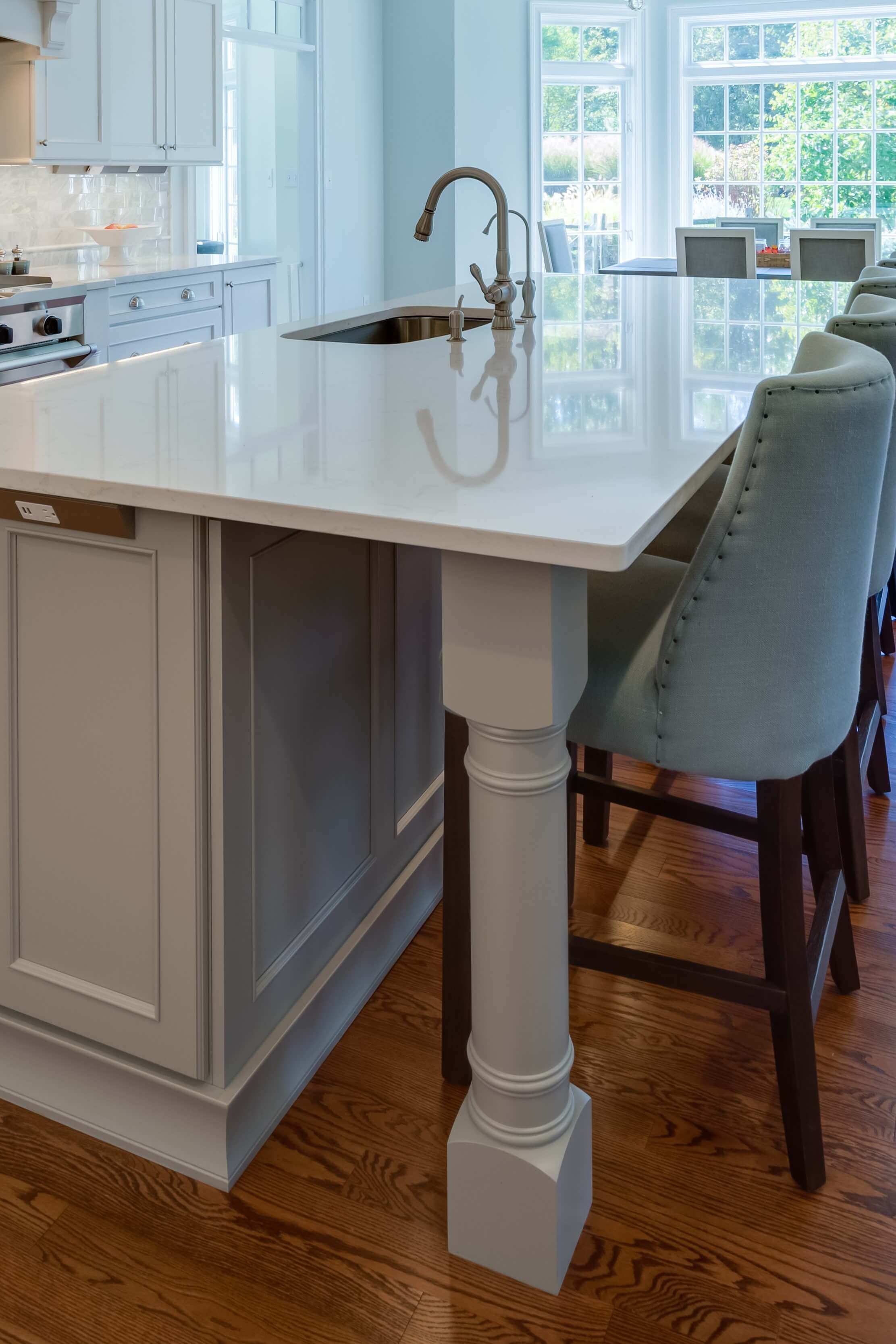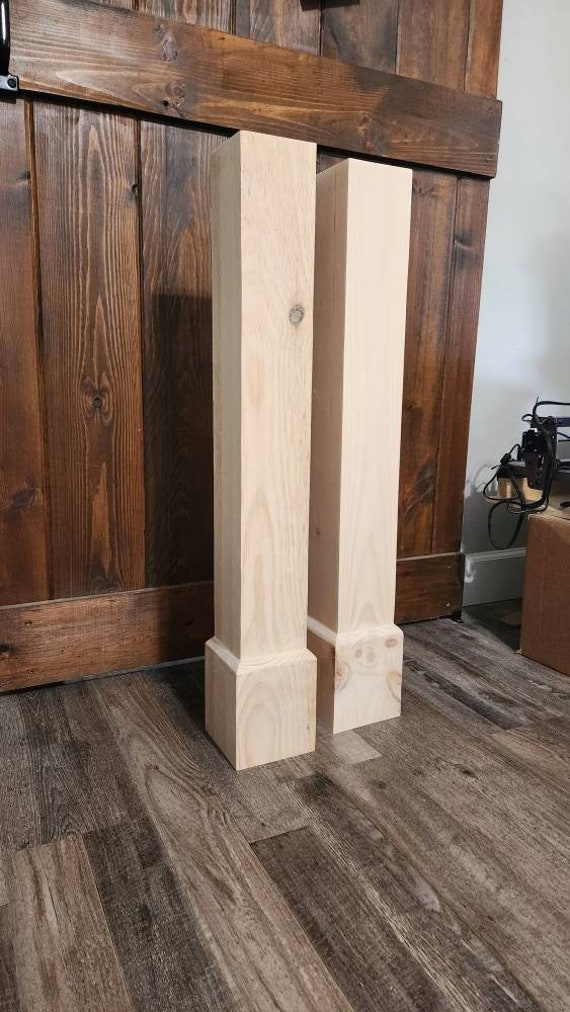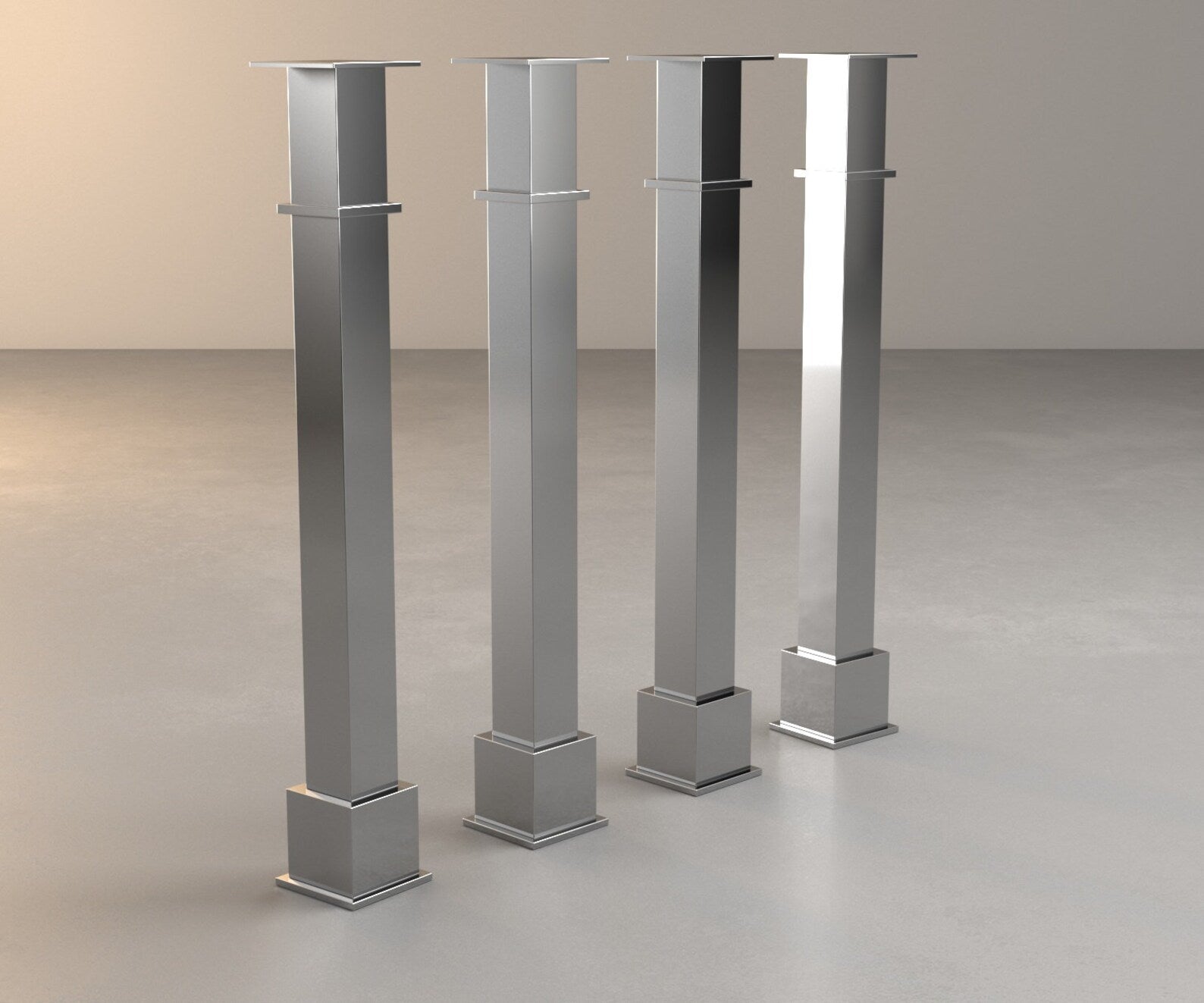Change Your Space with Cutting-edge Kitchen Island Leg Styles
Change Your Space with Cutting-edge Kitchen Island Leg Styles
Blog Article
Top Considerations When Choosing a Cooking Area Island Leg for Modern Kitchen Area Interiors
In the realm of modern-day cooking area insides, the option of a kitchen island leg is pivotal, influencing both aesthetic appeals and capability. Key considerations consist of the option of products that balance with modern style, in addition to the leg's stability and assistance to make sure long-lasting efficiency. Furthermore, height and proportions need to be attentively assessed to preserve a cohesive look. As these aspects link, they increase better inquiries regarding how to accomplish the excellent equilibrium between design and functionality, leaving one to consider the effects of each choice on the total kitchen area experience.
Product Choices
When it involves choosing a kitchen island leg, material options play a critical function in both visual appeals and performance. kitchen island leg. The most usual materials include timber, metal, and composite choices, each offering prospective disadvantages and unique advantages
Wood is favored for its warmth and classic allure, offering a timeless look that enhances different kitchen area styles. It is extremely functional, permitting customization in regards to shades and finishes. Wood may require more upkeep to stop warping or damage from moisture.
Metal, on the various other hand, brings a modern and industrial style to kitchen area islands. Stainless-steel and functioned iron are popular choices, understood for their longevity and resistance to put on. They can endure the rigors of everyday use yet might do not have the heat linked with wood.
Composite products, such as engineered wood or synthetic blends, provide a balance between cost, toughness, and aesthetics. These options are frequently developed to resemble the look of natural products while giving resistance to scratches and spills.
Eventually, the option of material must line up with the overall cooking area layout and meant usage, ensuring that the kitchen area island leg is both practical and visually attractive.
Design and Style
The design and layout of a cooking area island leg substantially contribute to the general visual of the room, enhancing the picked material. When choosing the leg style, take into consideration the building style of the kitchen. For circumstances, streamlined, minimal legs constructed from stainless-steel or acrylic harmonize with contemporary layouts, while ornate, transformed timber legs improve typical or farmhouse aesthetics.
Additionally, the finish of the leg can influence the aesthetic effect; a refined chrome or matte black coating may stimulate modern-day elegance, while distressed wood talks to rustic beauty. The leg's shape likewise plays a critical duty-- right, angular kinds convey an even more commercial feeling, whereas rounded or tapered legs introduce a softer, much more inviting look.
Integrating ornamental elements, such as embellishments or carvings, can include individuality and character to the kitchen area island, more enhancing its role as a prime focus. Eventually, the selected leg style ought to not only align with the general kitchen style yet also show the house owner's personal taste, ensuring that the kitchen area island comes to be a practical and unified focal point within the contemporary cooking area interior.
Elevation and Percentages
Accomplishing the best height and proportions for a cooking area island leg is important for both performance and visual appeals. Kitchen area islands normally range in elevation from 28 to 36 inches, relying on their planned usage-- whether as a cooking surface, eating area, or work space. Standard kitchen counter elevation is about 36 inches, making it vital that the legs you choose complement this height to give a smooth, integrated appearance.
Percentages also play a vital role in the visual equilibrium of the cooking area. The dimension and weight of the leg need to their explanation be in harmony with the general layout of the island - kitchen island leg. A slender leg might be appropriate for a modern or minimalistic island, while a this hyperlink more significant leg may be required for rustic or conventional designs. Additionally, take into consideration the spacing in between the legs; sufficient range makes certain comfort and ease of activity around the island.
When picking the height and proportions of the cooking area island leg, bear in mind the overall design style of your cooking area. This interest to detail not only enhances the functionality of the space however also contributes to a aesthetically attractive and natural indoor design.
Security and Support
Regularly making certain stability and support in kitchen area island legs is essential for both safety and performance. A sound kitchen island need to withstand daily use, including weight from appliances, food preparations, and celebrations. The choice of legs need to prioritize robust materials and layouts that can supply appropriate support.
When reviewing security, take into consideration the leg's material-- steel, light weight aluminum, or wood frequently use exceptional toughness contrasted to lighter alternatives. Additionally, the style needs to include a broad base to disperse weight equally and reduce the danger of tipping or wobbling. Legs made with an A-frame or cross-bracing can dramatically improve security.

Incorporating these factors to consider will certainly not just improve the total safety of the cooking area space but additionally improve the longevity and capability of the kitchen island, making it an important focal point in modern kitchen area insides.
Finishing Touches
When it comes to completing a kitchen island, thoughtful completing touches can significantly boost both its visual appeal and capability. Choosing the right leg style is important, yet matching it with proper information can transform the whole area. Take into consideration including decorative aspects such as toe kicks or baseboards that match the kitchen cabinetry or floor covering to develop a smooth look.

A cohesive shade scheme and material option will elevate the cooking area island, making it an exciting focal point. By paying attention to these completing touches, homeowners can produce a kitchen area island that is both functional and stunning, catering to their way of life and layout preferences.
Final Thought

In the world of modern-day cooking area insides, the option of a kitchen island leg is critical, influencing both appearances and capability.The design and design of a kitchen island leg significantly contribute to the total visual of the space, enhancing the selected material.Attaining the ideal elevation and percentages for a kitchen island leg is crucial for both capability and visual appeals.Regularly guaranteeing security and assistance in cooking area island legs is essential for both safety and security and performance.In summary, selecting a cooking area island leg for modern-day interiors requires careful factor to consider of material choices, design style, elevation, percentages, and stability.
Report this page